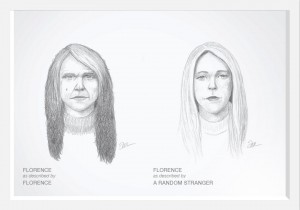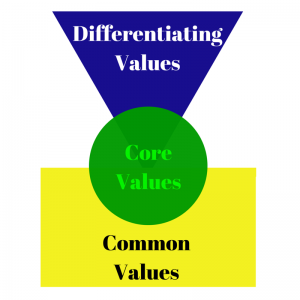When Accuracy Matters to a Marketer
As a differentiating value, Accuracy means conforming to a standard; freedom from mistakes.
Marketers who deliver exactly what’s expected are valued for accuracy (e.g. fast food order). Problems arise when the brand experience differs from the brand promise.
A marketer that under-delivers is expected to make it right, either by compensating the customer (cash, credit, or refund), or providing additional value until the customer is satisfied. A business won’t survive long if the value offered doesn’t match the price paid.
A marketer that over-delivers is viewed with skepticism, because it means they’re either trying to trick the customer (making the customer feel stupid), or the marketer doesn’t know better (making the marketer look stupid). When the value equation doesn’t match, customers always believe there’s a catch.
A dangerous side of accuracy for marketers is mapping the value proposition to an unrealistic standard. As a marketer, there’s a seduction to create a new standard that only “your” product or service can deliver. But if it’s not a realistic (and believable) standard for customers, it can become a big flop or even backfire (e.g. EcoBoost engines in GM and Ford trucks).
However, the flipside of this argument can work, if executed well. Marketers that attack a false standard, not previously identified, can win big on two fronts: bringing to light a bad standard, and associating their brand with a “new” standard.
Attacking a False Standard
 A brilliant example is the Dove Campaign for Real Beauty, launched in 2004. This campaign is the result of startling research showing that only 4% of women consider themselves beautiful. Dove’s mission is “to create a world where beauty is a source of confidence and not anxiety.”
A brilliant example is the Dove Campaign for Real Beauty, launched in 2004. This campaign is the result of startling research showing that only 4% of women consider themselves beautiful. Dove’s mission is “to create a world where beauty is a source of confidence and not anxiety.”
The campaign went viral with the launch of the Evolution video in 2006, explicitly showing the unrealistic perception of beauty for women. The tagline “No wonder our perception of beauty is distorted” captured the hearts and minds of women – and men. Dove was the first brand to successfully reveal this unrealistic standard that the “beauty” industry has been promising for years – and capitalize on it.
Earlier this year, Dove released a second video – Dove Real Beauty Sketches – showing how women do not view themselves as beautiful as others do. In this video, several women describe themselves to a forensic sketch artist, who cannot see the subjects. The same women are then described by strangers, whom they met the previous day. When the sketches are compared, the strangers’ description of each woman is invariably more flattering and more accurate.
In this case, the Dove brand wins because it is associated with conforming to the new standard (that they established): Real Beauty. As long as the brand experience continues to map to the brand promise, then the brand equity of Dove will continue to appreciate.
What do you think of the Dove Campaign for Real Beauty?
How can the value of accuracy help you create competitive advantage for your brand?
Today’s value was selected from the “Fairness-Respect” category, based on the e-book Developing Your Differentiating Values.







